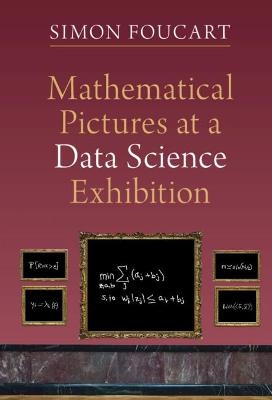
Mathematical Pictures at a Data Science Exhibition
Cambridge University Press (Verlag)
978-1-316-51888-5 (ISBN)
This text provides deep and comprehensive coverage of the mathematical background for data science, including machine learning, optimal recovery, compressed sensing, optimization, and neural networks. In the past few decades, heuristic methods adopted by big tech companies have complemented existing scientific disciplines to form the new field of Data Science. This text embarks the readers on an engaging itinerary through the theory supporting the field. Altogether, twenty-seven lecture-length chapters with exercises provide all the details necessary for a solid understanding of key topics in data science. While the book covers standard material on machine learning and optimization, it also includes distinctive presentations of topics such as reproducing kernel Hilbert spaces, spectral clustering, optimal recovery, compressed sensing, group testing, and applications of semidefinite programming. Students and data scientists with less mathematical background will appreciate the appendices that provide more background on some of the more abstract concepts.
Simon Foucart is Professor of Mathematics at Texas A&M University, where he was named Presidential Impact Fellow in 2019. He has previously written, together with Holger Rauhut, the influential book A Mathematical Introduction to Compressive Sensing (2013).
Part I. Machine Learning: 1. Rudiments of Statistical Learning; 2. Vapnik–Chervonenkis Dimension; 3. Learnability for Binary Classification; 4. Support Vector Machines; 5. Reproducing Kernel Hilbert; 6. Regression and Regularization; 7. Clustering; 8. Dimension Reduction; Part II Optimal Recovery: 9. Foundational Results of Optimal Recovery; 10. Approximability Models; 11. Ideal Selection of Observation Schemes; 12. Curse of Dimensionality; 13. Quasi-Monte Carlo Integration; Part III Compressive Sensing: 14. Sparse Recovery from Linear Observations; 15. The Complexity of Sparse Recovery; 16. Low-Rank Recovery from Linear Observations; 17. Sparse Recovery from One-Bit Observations; 18. Group Testing; Part IV Optimization: 19. Basic Convex Optimization; 20. Snippets of Linear Programming; 21. Duality Theory and Practice; 22. Semidefinite Programming in Action; 23. Instances of Nonconvex Optimization; Part V Neural Networks: 24. First Encounter with ReLU Networks; 25. Expressiveness of Shallow Networks; 26. Various Advantages of Depth; 27. Tidbits on Neural Network Training; Appendix A; High-Dimensional Geometry; Appendix B. Probability Theory; Appendix C. Functional Analysis; Appendix D. Matrix Analysis; Appendix E. Approximation Theory.
| Erscheinungsdatum | 21.04.2022 |
|---|---|
| Zusatzinfo | Worked examples or Exercises |
| Verlagsort | Cambridge |
| Sprache | englisch |
| Maße | 158 x 235 mm |
| Gewicht | 650 g |
| Themenwelt | Mathematik / Informatik ► Informatik ► Datenbanken |
| Informatik ► Theorie / Studium ► Künstliche Intelligenz / Robotik | |
| Mathematik / Informatik ► Mathematik ► Analysis | |
| Mathematik / Informatik ► Mathematik ► Angewandte Mathematik | |
| Mathematik / Informatik ► Mathematik ► Finanz- / Wirtschaftsmathematik | |
| ISBN-10 | 1-316-51888-4 / 1316518884 |
| ISBN-13 | 978-1-316-51888-5 / 9781316518885 |
| Zustand | Neuware |
| Informationen gemäß Produktsicherheitsverordnung (GPSR) | |
| Haben Sie eine Frage zum Produkt? |
aus dem Bereich


